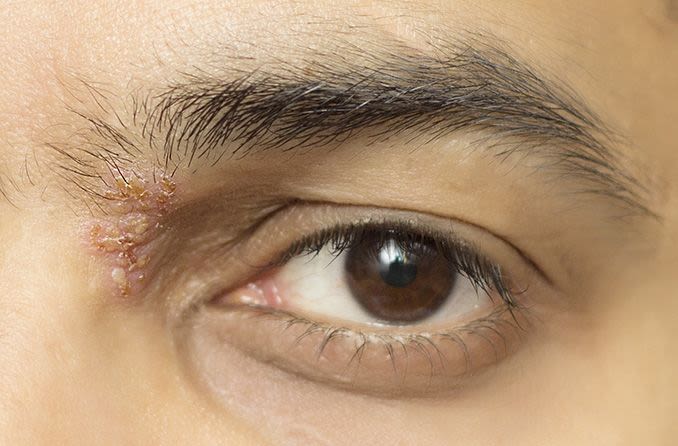Shingles, medically known as herpes zoster, is a viral infection caused by the varicella-zoster virus (VZV). While shingles commonly affects the skin, it can also manifest in the eye, leading to a condition known as shingles in the eye or ocular herpes zoster. This article explores the causes, symptoms, and available treatments for this potentially serious eye infection.
Causes of Shingles in the Eye:
Shingles in the eye occurs when the varicella-zoster virus, which initially causes chickenpox, reactivates later in life. After a person recovers from chickenpox, the virus remains dormant in the nerves. Factors such as aging, a weakened immune system, stress, or certain medications can trigger the reactivation of the virus, leading to shingles. When the virus affects the ophthalmic branch of the trigeminal nerve, it can cause shingles in the eye.
Symptoms of Shingles in the Eye:
Shingles in the eye presents several distinct symptoms that can vary in severity. Common signs of this condition include:
- Pain and discomfort: Patients often experience severe pain in and around the eye, accompanied by sensitivity to light (photophobia). The pain is usually localized to one side of the face.
- Rash and blisters: A characteristic rash may develop on the forehead, eyelids, or around the eye. Fluid-filled blisters can appear and may break open, forming crusts.
- Eye involvement: The infection can affect various parts of the eye, leading to redness, swelling, and inflammation. Conjunctivitis (pink eye), blurry vision, and in some cases, loss of vision, can occur.
- Headache and fever: Some individuals may experience headaches and low-grade fever along with other symptoms.
Treatment of Shingles in the Eye:
Early diagnosis and prompt treatment are crucial in managing shingles in the eye. Here are some common approaches:
- Antiviral medications: Prescription antiviral drugs such as acyclovir, valacyclovir, or famciclovir can help reduce the severity and duration of the infection. These medications work best when taken within 72 hours of symptom onset.
- Eye drops: If the infection affects the eye itself, specific antiviral eye drops or ointments may be prescribed to target the eye surface.
- Pain management: Over-the-counter pain relievers like acetaminophen or nonsteroidal anti-inflammatory drugs (NSAIDs) can help alleviate discomfort. However, stronger pain medications may be required in severe cases.
- Eye care and hygiene: Practicing good eye hygiene and avoiding contact with the affected eye are essential to prevent the spread of the infection and further complications.
- Steroid treatment: In certain cases, corticosteroid eye drops or oral steroids may be prescribed to reduce inflammation and minimize potential complications, although their use is carefully considered due to the risk of side effects.
- Ophthalmologist consultation: Seeking immediate medical attention from an ophthalmologist (eye specialist) is crucial to ensure accurate diagnosis, proper treatment, and monitoring of any eye-related complications.
Conclusion: Shingles in the eye can cause significant discomfort and potentially lead to serious complications, including vision loss. Understanding its causes, recognizing the symptoms, and seeking timely medical intervention are vital. With appropriate antiviral medications, pain management, and diligent eye care, the impact of shingles in the eye can be minimized, facilitating a faster and more comfortable recovery.


Leave a Reply